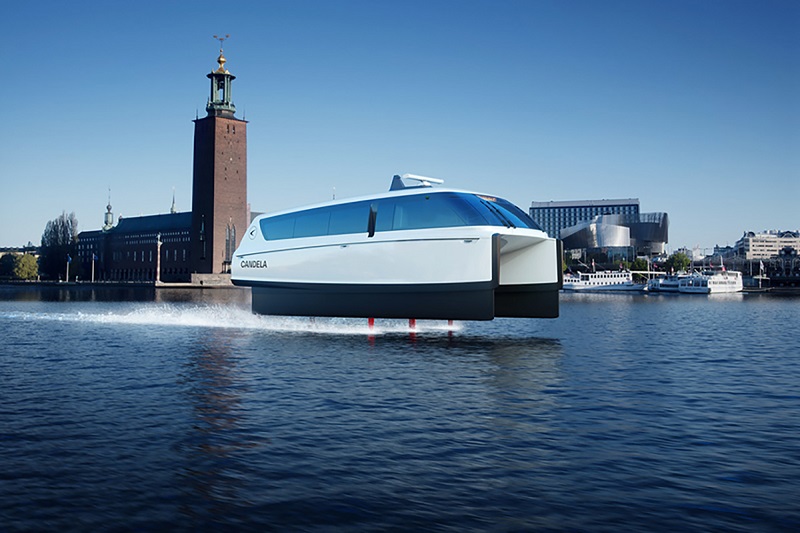EarthTalk®
From the Editors of E – The Environmental Magazine

Hydrofoils are not a new concept, but electric ones may be a promising new innovation for the future of sustainable maritime travel. Credit: Candela.
Dear EarthTalk: What exactly are hydrofoils and why are environmental advocates so bullish on them revolutionizing the shipping industry? — John C., Elizabeth, NJ
The shipping industry emits around three percent of the world’s greenhouse gas emissions annually, which is a comparable figure to that of the widely known airline industry’s footprint. Looking at how to make the shipping industry, and maritime transport, more sustainable is accordingly a key concern for environmental leaders around the globe.
Hydrofoils are not a new concept, but electric ones may be a promising new innovation for the future of sustainable maritime travel, and the field is developing fast.
December 2022 saw the advent of the world’s fastest and most long-range electric ferry to date in Stockholm, Sweden, in the form of the Candela P-12 shuttle.
Like all hydrofoils, this public transportation shuttle was built with a wing-like structure underneath itself that functions much like the airfoil seen on airplanes: As the official Candela press release states, “The hydrofoil technology means that the boat is lifted on wings that ’fly’ underwater, eliminating water resistance from pushing the hull through water.
The hydrofoils reduce energy consumption by 80 percent compared to conventional ships.” This new combination of technology makes electric hydrofoils both faster than diesel-powered ships and cheaper to operate due to less stringent energy demands.
The wide-spread implementation of electric hydrofoil technology has not yet occurred. However, Stockholm’s KTH Royal Institute of Technology asserts that the inclusion of electric hydrofoils or similar technologies could potentially reduce the shipping industry’s emissions by 97.5 percent compared to the emissions of standard diesel-fueled ships.
Furthermore, the very nature of the construction of these light-weight electric hydrofoils requires less material, overall minimizing the emissions of an electric hydrofoil throughout its lifetime.
In the face of rising global temperatures, and a projected increase in global greenhouse gas emissions, hydrofoils are necessary additions to the maritime industry if it hopes to reach the International Maritime Organization’s goal of cutting carbon emissions by 40 percent by 2030.
Beyond that, these ships also serve in the interest of efficiency, particularly since their lighter designs and inability to produce a wake mean that they are oftentimes faster than standard diesel boats: For example, the implementation of an electric hydrofoil has cut down one commuting route in Stockholm from 55 minutes to only 25.
The original concept of a hydrofoil has existed for decades, but electric hydrofoils are the “new kid on the block” focused on growing sustainable practices for the future. These boats’ low carbon footprint, lower operating costs and ability for more efficient transportation make them an interesting new opportunity for investment, and for a future that will require more environmentally-focused decision making.
CONTACTS:
Hydrofoil Basics, lancet.mit.edu/decavitator/Basics.html
Electric hydrofoil boats beat diesel boats for climate sustainability, kth.se/en/om/nyheter/centrala-nyheter/elektriska-barplansfartyg-klimatsmartare-an-dieselfartyg-1.1212858
EarthTalk® is produced by Roddy Scheer & Doug Moss for the 501(c)3 nonprofit EarthTalk.
See more at https://emagazine.com
To donate, visit https://earthtalk.org
Send questions to: question@earthtalk.org
